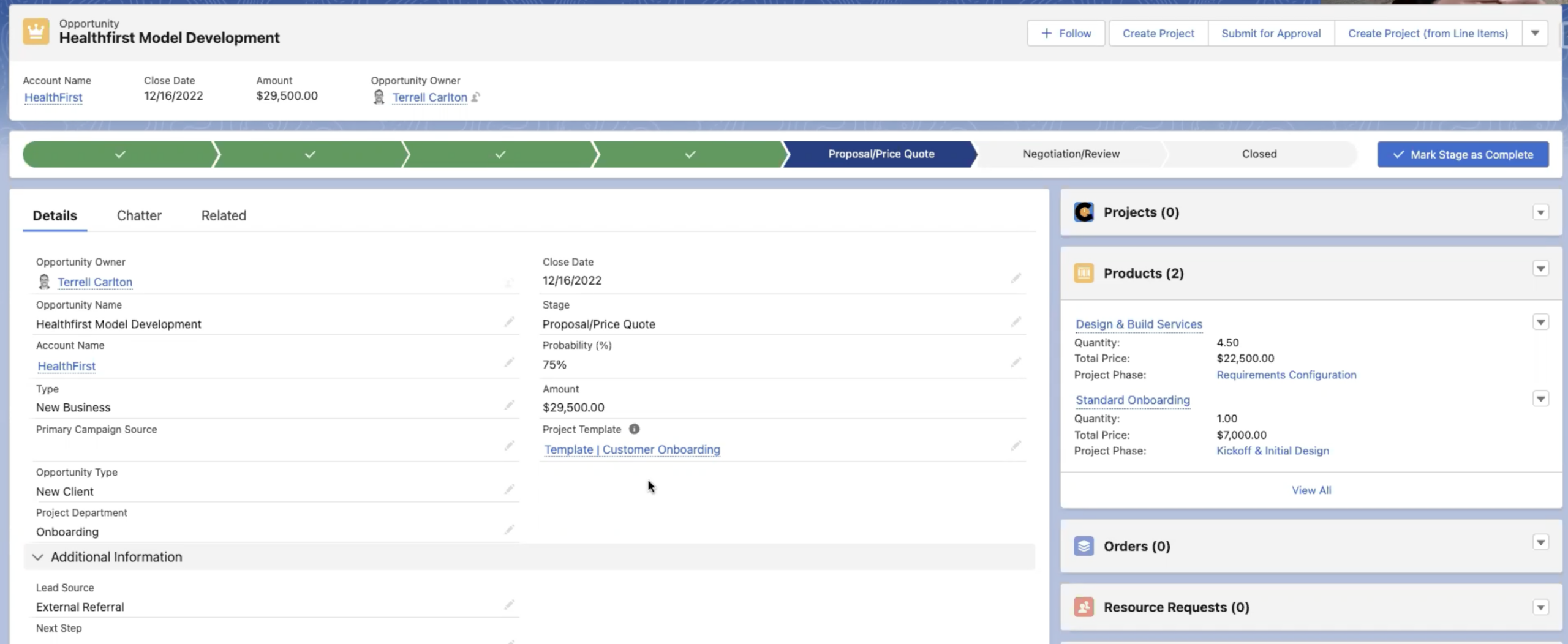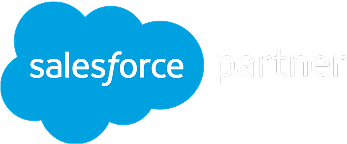CHAPTER 1
1. Integrate Better With Sales (and sooner in the customer journey)

The Problem
There is often a disconnect between what Sales teams agree to during the sales cycle and what delivery, onboarding or professional services teams have to actually deliver.
This disconnect means delivery teams can struggle to plan effectively from a resourcing, timeline or even a scope capability because they simply don’t know the full extent of what has been promised.
There’s also an immediate impact on your customers too. First impressions really do count, so ensuring a clean handoff where delivery teams are up to speed, and know as much as possible about that customer coming into that first conversation, is key to ensuring the health of your customer relationships going forward.
The Solution
Integrate your projects and resource requests into your Salesforce opportunities!
With Salesforce, you can create delivery projects based off your opportunity: meaning everybody is aware of what needs to be delivered, without the need for a handoff discussion, and without the need to rely on meeting notes from an Account Executive.
You can also leverage Salesforce notifications to let the delivery team know a new project has been added. To ensure your whole team is ‘in the loop’, you can even create projects before ‘Closed Won’ to aid with planning and delivery capacity.
The Benefit
- Better Customer experience, better first impressions
- Less delays to project kickoff
- Improved resource utilization
CHAPTER 2
2. Standardize More

The Problem
There are frequently inconsistencies across customer projects, with individual project managers running projects with unique quirks. Unfortunately these inconsistencies make the projects difficult to both scale and reiterate.
These project plan inconsistencies can also lead to problems with governance and reporting, with the inability to pinpoint what is driving efficiencies (or not) across project plans because too many variables are in play (what systems are being used? What methodologies?).
The Solution
Utilize project templates to standardize your best practices within your projects.
By using templates to run projects across your organization, you can start to look across the entire delivery cycle and be able to make improvements with a standardized way of working, combined with better reporting metrics.
The Benefit
- Predictable outcomes and reporting
- Easier to onboard new hires
- The ability to iterate on processes and see results holistically
CHAPTER 3
3. Map Time-To-Value To Your Onboarding Plan

The Problem
Standard project management doesn’t properly track “Time-to-Value”.
Time-to-value is a measurement between the point of purchase and that first experience where the customer experiences value in your solution. The shorter your time to value, the more likely a customer is experiencing satisfaction with your solution, leading to better retention rates further down the line. There’s also potential upsale benefits too.
Unfortunately, standard project management tools rarely track time to value, and this is particularly true in the customer onboarding sector.
Time-to-value is different to all businesses, meaning there is no ‘one size fits all’, and it’s often a collaboration between onboarding and customer success teams.
The Solution
Map Time-to-Value to your projects rather than making it “the project”.
Take the ‘go live’ stage, for example. For many, once this stage is complete, that’s the project over – but in reality that’s far from true. It could be the start of a bigger company-wide rollout, and that’s before you consider other stages like user adoption and training.
But the ‘go live’ task does mark an important milestone – and in Salesforce you could assign this as a time-to-value marker. Not to indicate that time-to-value has been achieved. But rather to say this this is when the estimated time-to-value can be calculated from, using other Salesforce information, such as Contract Length.
The flexibility of Salesforce means that you are always in control over how you measure your customer’s time-to-value.
The Benefit
- Accurate insight into the TTV of your customers
- Easily identify the bottlenecks within your implementation process impacting TTV the most
CHAPTER 4
4. Don’t Leave Your Customers in the Dark

The Problem
It might seem obvious, but communication between you and your customers is all-too-often neglected when it comes to implementations.
Expectations are commonly misaligned, and there’s often a lack of transparency over what is to be completed, by whom, and by when.
The Solution
The solution here is relatively simple (but so rarely seen) – and that’s finding a way to provide visibility to your customers effectively. Companies certainly try: oftentimes customers are presented with outdated, inflexible project plan spreadsheets. It’s a version control nightmare, with so many disparate moving parts.
With Cloud Coach, you can provide intuitive customer facing view of your project plan that is updated in real time. It’s accessible 24/7, and you can customize to only show your customers information that is relevant to them.
The Benefit
- Increase customer satisfaction
- Less project delays
- More customer confidence in the overall process
CHAPTER 5
5. Report on all Your Different Health Metrics

The Problem
We see our customers reporting on project health all the time, which is great. But we frequently find that these approaches are far too broad.
Project health is multifaceted, so a single ‘red, yellow, green’ color is unlikely to ever tell the true story of how a project is really going.
The Solution
We provide multiple health statuses for different perspectives on the project, which all roll up into the overall project health. It means everyone can see, at a glance, what is going well within a project and, more importantly, what areas require further attention.
The Benefit
- Have metrics tied to what different stakeholders care about and/or have the most control over
- Better drill down ability into the reasoning for overall project health






















